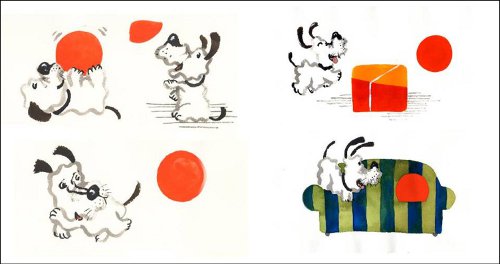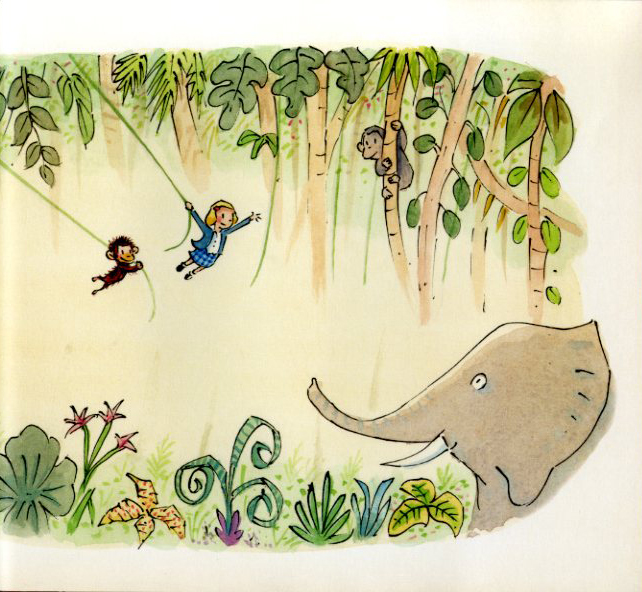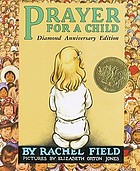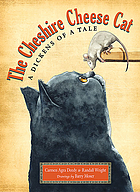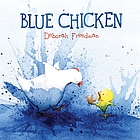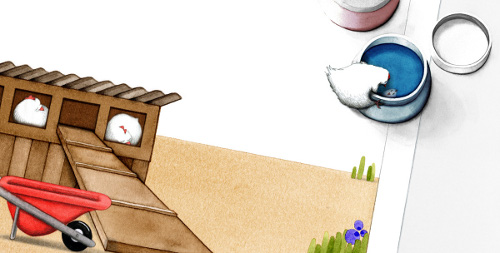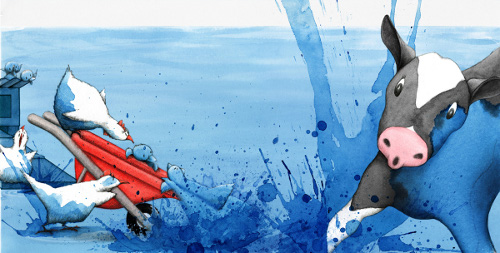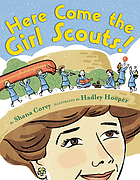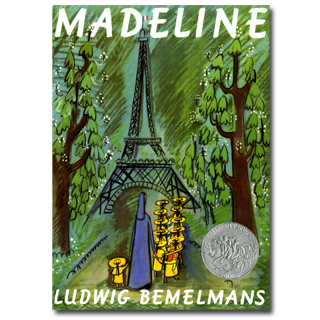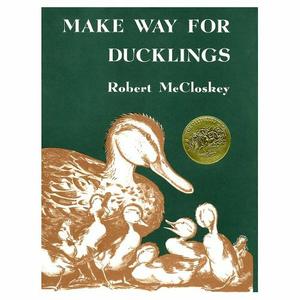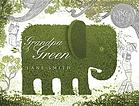Welcome to
Non-Fiction Monday and a special joint edition, co-hosted by Mary Ann and Travis. Mary Ann runs
Great Kid Books and Travis runs
100 Scope Notes. Both are elementary school librarians who love sharing all sorts of nonfiction with children. But tops on our lists are picture book biographies.
MA: Picture book biographies draw today’s kids into the lives of people we admire, giving our kids a glimpse of their struggles and accomplishments.
T: A great picture book biography can highlight not only an individual, but also provide a glimpse into a particular time and place for a variety of readers.
MA: Yep, these picture book biographies draw students from kindergarten through 5th grade. Some are simple and accessible, like
Martin’s Big Words by Doreen Rappaport. Others are complex and intricate, like
Starry Messenger, by Peter Sis. But I especially love picture book biographies that can be read by a range of audiences.
T: And that’s what we have here, I think. This picture book biography of Girl Scouts founder Juliette “Daisy” Gordon Law by Shana Corey (who’s previously knocked it out of the park with picture book bios Milly and the Macy’s Parade and Mermaid Queen) does things right. A remarkably fresh take on the founder of an organization that has changed the world.
Here Come the Girl Scouts!
The amazing all-true story of Juliette “Daisy” Gordon Low and her great adventure
by Shana Corey
illustrated by Hadley Hooper
NY: Scholastic, 2011
ages 6 - 10
available at your local library, favorite bookstore or on Amazon
MA: I’ve been amazed how vibrant the Girl Scout organization remains, and how many of our students are Girl Scouts today. They join partly to have fun with their friends, and partly because the values of the Girl Scouts still speaks to girls. “To make yourself strong and healthy, it is necessary to begin with your insides.” Daisy Low said that over 100 years ago, but it still resonates today.
T: My Thin Mint habit is indeed alive and well. It’s great to see the organization thriving. A year or so ago, due to student demand, I was desperately looking for books on the Boy Scouts and Girl Scouts. I was amazed to discover that the pickings were slim. For the Girl Scouts, at least, that’s about to change. 2012 is the group’s 100 year anniversary and it seems every publisher is coming out with something on the topic. While Here Come the Girl Scouts! is the first such offering I’ve read, it’s going to take a lot to top it.
MA: This book is going to draw these girls into seeing what values were established by Girl Scout’s founder, Juliette Gordon Low - called Daisy by her family and friends. She was no wilting flower! Daisy loved adventure and wanted girls to learn skills that would help take them places in life. She had many advantages in life, but she really thought about how she could make a difference in girls’ lives, how she could help others explore and expand their horizons. Corey brings this out through her lively narration and Low’s quotes that she sprinkles across every page.
T: That definitely adds another layer of character. The third-person text is concise yet retains personality. Key words and dialog are often given a bold font and color, increasing interest.
MA: The design and layout really draw kids to it. I’ve also been happy that it’s a great read aloud - so it works well for younger kids in 1st or 2nd grade, as well as nine and ten year olds.
T: The story wouldn’t work nearly as well if it weren’t for Hooper’s gorgeous artwork, “created with traditional ink, paint, and printmaking techniques, then scanned and assembled in PhotoShop.” The palette is sunny an oozes appeal. My first thought is that the art looks something like what would result if you gave LeUyen Pham (Grace for President, Freckleface Strawberry) block print tools. The technique itself reminds me of Stephen Shaskan’s A Dog is a Dog from 2011.
MA: You can really see her characters’ spirit in this sample. They do remind me of Pham’s characters, especially from Freckleface Strawberry or Big Sister, Little Sister!
T: Can we make it mandatory to include illustration info in every picture book? I would have assumed these illustrations were created entirely in the digital realm until the CIP page note set me straight.
MA: Corey conveys the essence of Low’s philosophy in an upbeat way. I didn’t realize her origininal philosophy emphasized outdoor activity so much. Imagine camping with a group of girls in the early 1900s! I love this spread here:
T: Two other books are coming out this winter about Juliette Gordon Low - both are much longer (200 - 400 pages), full of photographs and primary sources, perfect for older students:
Ginger Wadsworth, First Girl Scout: the life of Juliette Gordon Low
Stacey Cordery, Juliette Gordon Low, the remarkable founder of the Girl Scouts
MA: Another thing to mention is that this is the 100th anniversary of the Girl Scouts - many celebrations are being planned around the US. Our troops here in the Bay Area are very excited about “bridging” from one century of Girl Scouts to the next by walking across the Golden Gate Bridge with thousands of other Girl Scouts. Find out
more information here.
T: Engaging, informative, easy on the eyes - it’s well done, plain and simple. This deserves a spot in collections far and wide.
MA: Thanks Travis for joining me! Let’s welcome all the other great nonfiction around the Kidlitosphere.
If you have something to share, please leave a comment and we’ll add it to the post as the day goes on.
Nonfiction Monday
Early birds: Sunday night contributions
Jeff Barger at
NC Teacher Stuff has a great review of the nonfiction iPad app
Bobo Explores Light. This is a Cybils finalist - Jeff served on the judging panel of the iPad Book Apps Round 1 Cybils panel.
"Bobo the robot trips the light fantastic and takes the reader on a journey to explore this most necessary phenomenon.... If you have a child who loves nonfiction, you have to get this app."
Tara at
A Teaching Life is sharing two photo-essay books she will be sharing in her Writing Workshops this week:
Afghan Dreams: Young voices of Afghanistan, by Tony O'Brien and Scott Sullivan, and
When the Wolves Returned: Restoring nature's balance in Yellowstone, by Dorothy Hinshaw Patent, with photographs by Dan and Cassie Hartman.
Over at
True Tales and a Cherry on Top, Jeanne Walker Harvey is featuring another great picture book biography is featured on her post today -
The Flying Machines of Alberto Santos.
At
GatheringBooks, Fats has reviewed Margarita Engle's
The Poet Slave of Cuba, "a lyrical biography of Juan Francisco Manzano, a man born into slavery
and known to remain in servitude until he was forty years old."
Breakfast rounds: Monday morning
OK, West Coast time here and a few posts to add before waking up the kids and getting going. I will add more after the morning rush is through. Please do keep leaving comments!
Ms. Yingling is sharing two military books:
Ghosts in the Fog and
Fighter Jets. I know many students would be very interested in these. Thanks for recommending them!
Louise, at
A Strong Belief in Wicker, is sharing a lovely book about swallows from the Animal Neighbours series.
The Nonfiction Detectives, Cathy Porter and Louise Capizzo, are reviewing
How the Dinosaur Got to the Museum. "Inquisitive students and dinosaur lovers will enjoy this companion to
How the Sphinx Got to the Museum."
Head over to
Shelf Employed to read a review of
Can We Save the Tiger?, "a beautiful and affecting book." This is part of her series on the Cybils finalists - I'm looking forward to reading more in this series.
Amy at
Hope is the Word, is also reviewing a Cybils finalists: Jim Arnosky's
Thunder Birds: Nature's flying predators. "Arnosky’s love and appreciation for these aeriel assailants comes
through in both his gorgeous acrylic and white chalk pencil
illustrations and his awe-filled text." I can't wait to read this!
At
Rovingfiddlehead Kidlit, Andrea is sharing about
stuff you missed in history class. I'm looking forward to checking out these podcasts and her book pairing suggestions!
Stop by for a visit to the
Jean Little Library to check out Jennifer's review of
Look at That Building! A first book about structures. "Beginning with foundations, each spread takes the group of friends
through the parts of a building as they research buildings on their way
to and at the library, planning to build a doghouse."
Afternoon tea
Well, the day has zoomed by with kids coming into the library, shelving and books to share. Here are some more great nonfiction reviews to take a look at!
Head over to
Wrapped in Foil to check out Roberta's look at another Cybils finalist:
Unraveling Freedom: The Battle for Democracy on the Home Front During World War I
by Ann Bausum. This fascinating book "not only a summarizes domestic events during World War I,
but also shows how these events parallel those from 9/11."
Simply Science is sharing
Biomimicry: Inventions inspired by nature, which "explores patterns found in the diversity of nature as the inspiration for technology and inventions that benefit people." Fascinating, indeed!
Abby the Librarian checks in with a review of
Flesh and Blood So Cheap: The triangle fire and its legacy, by Albert Marrin. "Not only would this make a great addition to history lessons, but it
could easily spark conversations about immigration and how it has
changed in this country over the past hundred years."
Head over to
Challenging the Bookworm to take a look at the beautiful
Pocketful of Posies by Salley Mavor. While this may not be your normal nonfiction,
it is a book of nursery rhymes which "technically" goes in nonfiction.
The beautiful illustrations are what drew her attention.
Lisa Song at
Read for Keeps has reviewed
Blizzard of Glass by Sally Walker."This is a book I simply couldn’t put down. The tension built gradually
in the first few chapters ... By the time Walker described what the
families were doing just before the explosion, I was practically biting
my nails."
Anastasia Suen checks in at her new
Booktalking site with a Picture Book of the Day,
When Anju Loved Being an Elephant
by Wendy Henrichs (Author) and John Butler (Illustrator), and a Chapter
Book of the Day,
Off to Class: Incredible and Unusual Schools Around the World by Susan Hughes.
At
Brimful Curiosities, they are discussing
aircraft carriers. They are particularly excited about
Who Lands Planes on a Ship? - I loved how she is exploring nonfiction to develop her son's enjoyment of a new toy!
Over at
Nonfiction Book Blast, Susan Stockdale has fun with
Fabulous Fishes, which "introduces young readers to both exotic and familiar fishes in simple,
rhyming text. The bright bold colors and crisp, clear lines of
Stockdale’s fishes, depicted in their natural habitats, can’t help but
grab your attention."
Wendie Old checks in at
Wendie's Wanderings with a review of
A Day in the Life: Polar Animals: Emperor Penguin.
The review copy was kindly sent by Scholastic. If you make a purchase using the Amazon links on this site, a small portion goes to Great Kid Books (at no cost to you!). Thank you for your support.
Review ©2012 Mary Ann Scheuer, Great Kid Books, and Travis Jonker, 100 Scope Notes.




